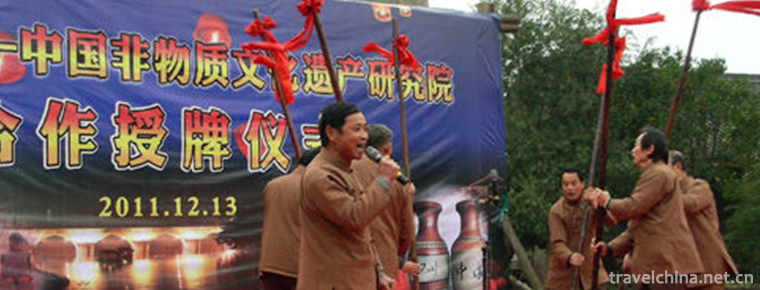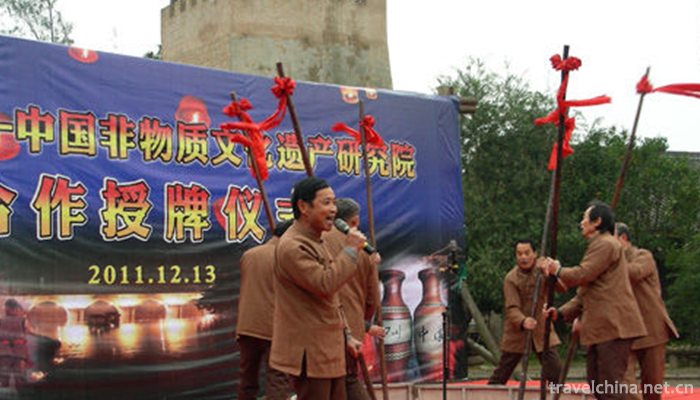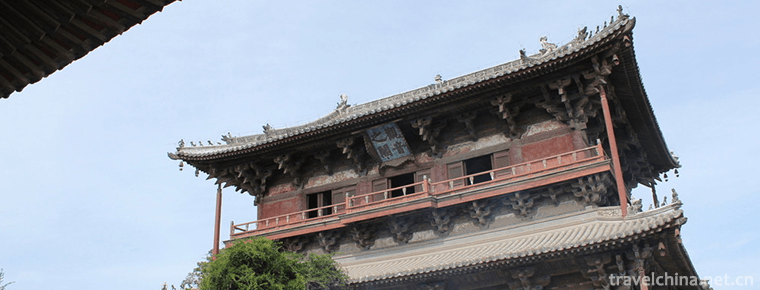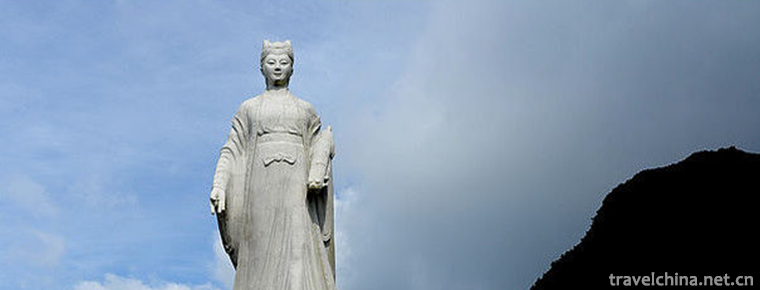2019-01-08

- By ChinaWiki.net
- Chinese Edition
- 2019-08-03
Make a chant
Bamboo and hemp trumpet is a traditional folk song of Qionglai City, Sichuan Province. It belongs to a kind of labor trumpet sung by local papermaking workers when playing bamboo and hemp. It is mainly popular in Jinhua Village, Jinhe Village, Yangwan Village, Lugou Village, Tongle Village and Huacai Village of Pingle Town in Chengdu. Bamboo and hemp trumpet singing is primitive, simple, extensive and high-spirited. It is one of the intangible cultural heritages of a few traditional folk singing genres in Western Sichuan. It has strong local characteristics and unique artistic charm.
On June 7, 2008, the production number was approved by the State Council and listed in the second batch of national intangible cultural heritage list.
Singing Style
The singing style of bamboo and hemp trumpets is the traditional folk music form of "one leading group and harmony type". In the heavy and monotonous work process, when the hook hand is long nail rake, the bamboo and hemp trumpets need to be played to the workers, the loud song of bamboo and hemp trumpets began to ring throughout the paper mill. At the beginning, a worker led the singing, and then many workers joined in chorus, in order to achieve the purpose of inspiring energy, unified rhythm, expressing feelings and eliminating fatigue. With the rhythm of the trumpet from slow to fast, the movement of paper workers is becoming more and more vigorous and powerful. When the bamboo and hemp are almost finished, the mood of workers and the chant of the trumpet also reach a climax, giving people a sense of inspiration and enthusiastic and unrestrained artistic beauty.
Singing features
The songs and tunes of bamboo and hemp chant include high tune, flat tune, chain buckle, silk tune and twist tugging, etc. They are rich in rhythm and change. The content of the lyrics is also rich and delicate, the randomness and flexibility of the paragraph are strong, and the linings such as "wordy bah", "fei", "moo" are often used between the paragraphs, especially the traditional aria "Decades of February".
Here, the passion for work and the emotion of singing are perfectly unified. The lyrics of bamboo and hemp chant mainly reflect local traditional folk customs and folk arts, local social and economic conditions and people's production and lifestyle. And with the change of the times, the content is also updated, which has a strong artistic vitality.
Beating bamboo and hemp is the most arduous work in the traditional manual papermaking process. It needs tools to break the whole bamboo. Therefore, people have invented the bamboo and hemp chant to express happiness and life in the arduous work. With the development of social economy, today Pingle Town and its nearby handmade paper mills have gradually been replaced by machine paper, but bamboo and hemp chants are still retained as a popular form of folk music, which has become a witness of that era.
Inheritance value
Most of the surviving old papermaking workers in Pingle can sing bamboo and hemp chants completely. In the 1950s, the bamboo and hemp trumpets collected and sorted out were put on the stage and became the unique folk literary and artistic programs of Bazi in Western Sichuan. This simple slogan originated from life, has participated in Sichuan literary and artistic performances and won prizes, but also to the Great Hall of the People to participate in the national folk song elite performance, won the audience's favorite and highly praised.
The bamboo and hemp chant records an unforgettable history. Nowadays, the ancient paper-making site of Pingle ancient town has been listed as the cultural relics protection unit of Chengdu. The bamboo and hemp chant born in the process of paper-making has also become a popular "original ecology" repertoire on the stage of tourists and literature and art. The inheritance and development of bamboo and hemp chant is undoubtedly a memory and praise of an era, a kind of life and a kind of creation.

Ask a Question
Your email address will not be published.



0 Questions